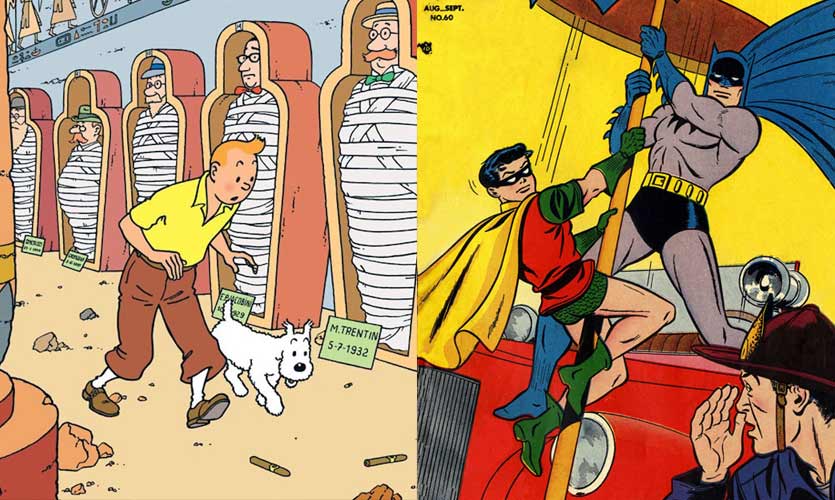Who could’ve thought that an animated figure drawn on a piece of paper, with some captions and a few dialogues would become such a sensational form of entertainment? Although it is said that comic art is a centuries old concept, with some evidence being found in the ancient cave paintings of France and Egypt, the format that we know and love today is relatively modern.
Cut to the late 19th century when comic book art underwent an experimental phase, with artists and publishers trying out creative ways to publish comic strips in daily newspapers. More genres like drama and adventure were introduced out of which the iconic Adventures of Tintin was created in 1929. Comic story arcs with the ‘superhero fighting villains’ narrative became commonplace. However, the absolute game changer was Action Comics #1, released in 1938 in America, with Superman on its cover. The idea of men and women, with unforeseen superpowers, who fought bad guys to save the world became wildly popular.
In another part of the world, after being introduced in 1811, the Japanese Manga was already an integral part of their culture. By 1900, the modern Japanese comic strip we know today was born. But it was only after the second world war that manga began gaining international recognition, especially the works of Osamu Tezuka. By the 1960s, anime films were being made, which continued gaining recognition right up till the 21st century, and experienced a major boom in the last decade.
As for their American counterparts, from 1938, Superman, Batman, Wonder Woman, Captain America and Green Lantern became regular names amidst comic book enthusiasts. World War II became a source of inspiration for them as many comic books were centered around the event. The two leaders of the era, Marvel and D.C. gained unprecedented prominence during the time, but experienced a minor drop in the following decades of 1960s and 70s. Around this time, Spiderman was born as a way to pick the business back up.
In the late 1990s and early 2000s, comic books faced a low period, that was until both the houses decided to convert the books into movies. It piqued interest in the art once more, which steadily rose, and continues to rise till date. The best example of this is the Marvel Cinematic Universe (commonly known as MCU). It soon took over tv shows, cartoons and video games. We’ve reached the era of urban art and web comics now, with genres and characters no longer defined by any particular set of rules. As for the quintessential comic books, they are still loved by many and even bought as collectibles.










